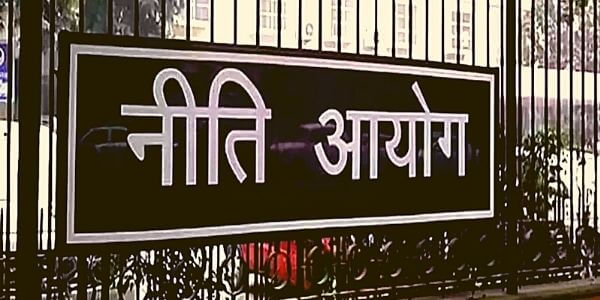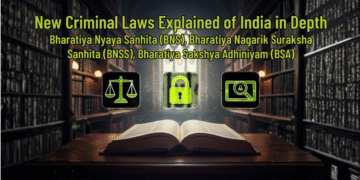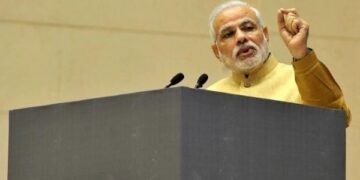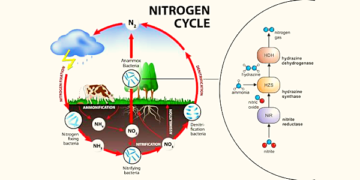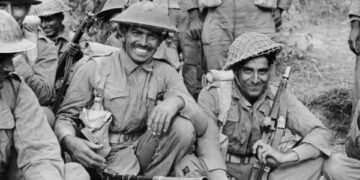In this post, you will learn what NITI Aayog is. NITI Aayog’s Full form, who is NITI Aayog’s CEO and Vice-chairman? The NITI Aayog is a crucial topic for the UPSC civil services test. It is a crucial organization that will undoubtedly play an important part in the country’s development. As a result, you should become acquainted with the NITI Aayog. Because it would be covered in both the UPSC prelims and mains exams, NITI Aayog is a good topic.
What is NITI Aayog?
The NITI Aayog, which has a 65-year history, has taken the position of the Planning Commission. For quite some time, the Planning Commission’s utility & significance have been questioned. The replacement appears to be more relevant & sensitive to the country’s current economic demands and situation. Therefore, on Jan 1st, 2015, the Planning Commission was replaced by a new entity, NITI AAYYOG, focusing on a “Bottom-Up” approach to envision the vision of Maximum Governance, Minimum Government, mirroring the spirit of “Cooperative Federalism.”
“Team India Hub” & “Knowledge and Innovation Hub” are two hubs created by the NIT.
- Team India: It entails Indian states collaborating with the federal government.
- The Knowledge and Innovation Hub: It enhances the think tank capabilities of the organization.
It is also establishing itself as a cutting-edge resource center, with the necessary resources, expertise, and abilities to enable it to move quickly, accelerate research and innovation, provide critical policy vision to the government, and manage unforeseen difficulties. The NITI Aayog was established because people expected to see progress and development in the administration as a result of their participation. This necessitated administrative structural adjustments as well as active strategy alterations that may seed and support large-scale transformation.
Don’t forget to take a look at this link. This article will provide you with comprehensive information about The NAM countries, headquarters (HQ), summit, and other important details. It is an important idea for the IAS test.
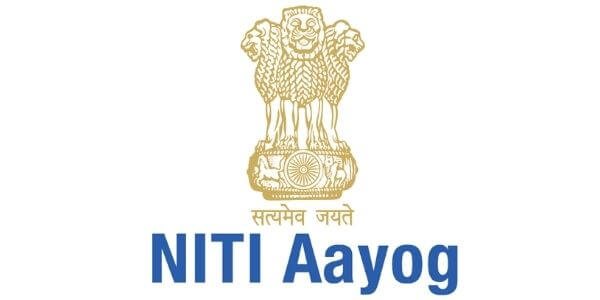
NITI Aayog – Full Form, CEO & Vice Chairman
On January 1, 2015, the NITI Aayog was established. The word “NITI” signifies morals, behavior, guidance, and so forth in Sanskrit. However, it refers to the policy in this context, and the NITI stands for “National Institution for Transforming India.” It is the country’s principal policy-making agency, and it is supposed to boost the country’s economic growth.
- NITI Aayog Chairman – Narendra Modi
- NITI Aayog CEO – Amitabh Kant is the second and current chief executive officer (CEO) of NITI Aayog, the government of India’s public policy think tank. He is a Kerala cadre retired IAS officer from the 1980 batch.
- NITI Aayog Vice Chairman – Dr. Rajiv Kumar is the current Vice Chairman of the Aayog (September 2017 – present).
Composition of the NITI Aayog & Full Form
The NITI Aayog will be made up of the following members:
- The Prime Minister of India chairs the Governing Council, which is made up of the Chief Ministers of all Indian states and the Lieutenant Governors of Union Territories.
- Regional Councils will be established to handle specific challenges and opportunities that touch many states. These will be generated for a specific period of time. The Prime Minister will call it together. The Chief Ministers of States and the Lieutenant Governors of Union Territories will make up the group. The Chairperson, Vice Chairman & CEO of the NITI Aayog or his nominee will preside over these meetings.
- Guests of honor: The Prime Minister will nominate eminent expert specialists with appropriate domain knowledge.
- In addition to the Prime Minister as Chairperson, the full-time organizational framework will include:
- Vice-President (appointed by the Prime Minister)
- Members:
- Full-time
- Members who work part-time: In an ex-officio position, a maximum of two members are from premier universities, leading research organizations, and other creative organizations. Part-time employees will be rotated on a regular basis.
- Members of the Ex-Officio Committee: The Prime Minister must nominate a maximum of four members to the Council of Ministers.
- Chief Executive Officer: The Prime Minister will appoint the CEO for a set period of time. He will hold the position of Secretary to the Indian Government.
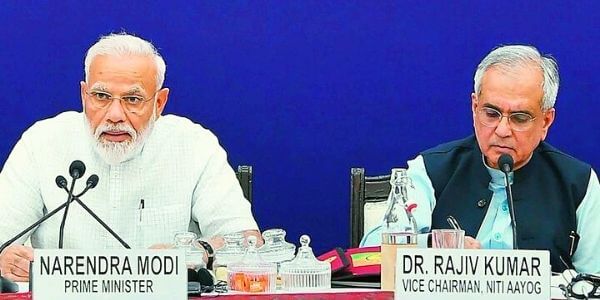
Objectives of this Body
- Fostering continuous cooperative federalism with the States through organized support initiatives and procedures, understanding that strong states equal a strong nation.
- Develop mechanisms for developing realistic plans at the village level and gradually aggregate them at higher government levels.
- To guarantee that national security objectives are included in economic strategy and policy in areas where they are particularly relevant.
- Pay special attention to individuals in our society who may be in danger of missing out on the benefits of economic progress.
- To offer guidance and foster collaborations between important stakeholders and like-minded think tanks on a national and international level and educational and policy research institutions.
- Through a collaborative community of national and international specialists, practitioners, and other partners, establish a knowledge, innovation, and entrepreneurial support system.
- To provide a platform for resolving cross-sectoral and cross-departmental issues to accelerate the development agenda’s implementation.
- Maintaining a cutting-edge Resource Centre, serving as a repository for research on good governance and best practices in sustainable and equitable development, and assisting in their dissemination to stakeholders.
What distinguishes NITI Aayog from the Planning Commission?
- The NITI Aayog and the Planning Commission are both advisory bodies, but the main difference is that the NITI does not distribute funds to states.
- States had limited powers under the planning commission era, while NITI Aayog’s governing board includes all state chief ministers and UT administrations.
- The planning commission’s top-down method is inverted at NITI Aayog with Vice Chairman, which develops plans from the village level to the national level in stages.
- The Planning Commission is in charge of developing annual central plans, but it is in charge of evaluating their execution.
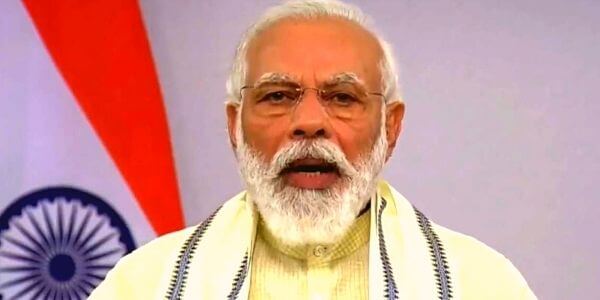
The NITI Aayog has published a number of documents
The following are the documents published by NITI Aayog:
- A fifteen-year vision, a seven-year strategy, and a three-year action plan are all part of the plan.
- The Fifteen-Year Vision and Seven-Year Strategy documents are now being prepared at the NITI Aayog.
Three-Year Action Plan
- The NITI Aayog’s Three-Year Action Agenda covers the years 2017-18 to 2019-20. This document is being released to suggest policy changes and action plans for the years 2017-2018 and 2019-20.
- The Action Agenda was created as part of the process that led to the creation of the Vision and Strategy paper. It has been prioritized and issued first in light of the fact that it is of immediate policy relevance as the fiscal year 2016-17 begins.
- The Three-Year Action Agenda proposes bold policy reforms in a relatively short amount of time.
Conclusion
We’ve talked about what the NITI Aayog is. Who is the CEO and Vice-Chairman and full form? In this article. We’ve also included information on the NITI Aayog’s goals. What makes NITI different from the Planning Commission? and it has also released a number of documents. You should learn all you can about the NITI because it will be covered in both the UPSC prelims and main tests. We aim to cover all aspects of the IAS exam to assist you in passing it. As a result, when reading the paper, attempt to jot down all important elements. It will assist you during the examination. To acquire all the exam details and notices, go to the UPSC official website here.
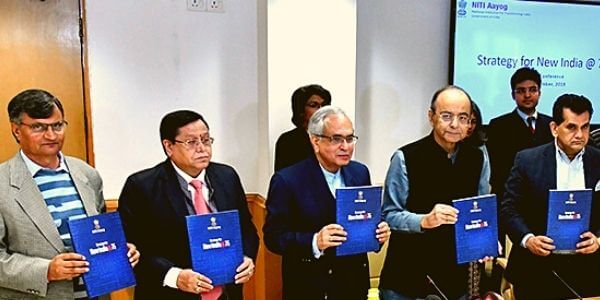
FAQ
The National Institution for Transforming India, or NITI Aayog, was established on January 1, 2015, by a resolution of the Union Cabinet. The Government of India’s top policy thinks tank, NITI Aayog, provides directional and policy suggestions.
The NITI Aayog does not have the authority to enforce policies on individual states. The National Institution for Transforming India (NITI Aayog) is a consultative organization. Previously, the Planning Commission had the authority to implement the policies of the states and the projects that it had approved. The Planning Commission may have fewer full-time members than the Planning Commission.
NITI Aayog has designated 117 aspirational districts for transformation through education, health and nutrition, agriculture and water resources, financial inclusion, Skill Development, and basic infrastructure development.
Editor’s Note | NITI Aayog
In conclusion, learn everything there is to know about the NITI Aayog. What is the complete name of the CEO and Vice Chairman? In this article. We’ve also provided details on Aayog’s objectives. What distinguishes NITI from the Planning Commission? It has also made a number of documents public. Solving previous year’s questions has been one of the most popular ways to learn the UPSC exam paper over the years. Aspirants must understand time management in order to prepare for the UPSC exam. As a result, attempt to solve the UPSC sample papers. It allows the candidate’s weakest and stronger topic areas to be identified. Aspirants would be able better to align their exam preparation as a result of this. We wish you the best of luck with your exam.

